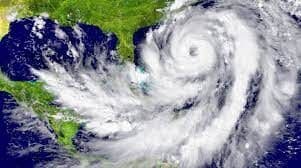Should I Replace My Roof After Wind Damage

It is important to replace a roof with wind damage in order to protect your home from further damage. Wind damage can cause significant damage to your roof, and if left unrepaired, this damage can lead to leaks and other water damage. This can be costly to repair and can cause long-term damage to your home.
In addition to the potential for water damage, wind damage can also weaken the structural integrity of your roof. When strong gusts of wind hit a roof, they can cause the shingles or tiles to become dislodged or torn, leaving the underlying structure of the roof vulnerable to further damage, such as from heavy snow.
Another reason to replace a roof with wind damage is to protect the value of your home. If you are planning to sell your home in the future, a damaged roof may be a turn-off to potential buyers. A new roof will not only protect your home from further damage, but it will also increase the value of your home.
Finally, replacing a roof with wind damage can also help to protect your family and your belongings. A damaged roof can pose a safety hazard, and if left unrepaired, it may be prone to leaks or other problems that can cause harm to your family or your possessions.
In summary, replacing a roof with wind damage is important to protect your home from further damage, to maintain the structural integrity of your roof, to increase the value of your home, and to protect your family and your belongings. If you are not comfortable or confident in your ability to complete the replacement, it is recommended that you hire a professional roofing contractor.

Is It Necessary To Replace My Roof After Wind Damage?
Roof replacement for wind damage is a necessary task to protect your home from further damage. However, it is also a complex and potentially dangerous task that should be undertaken with caution. If you are not comfortable or confident in your ability to complete the replacement, it is recommended that you hire a professional roofing contractor.
Step 1: Assess the Wind Damage
The first step in replacing a roof for wind damage is to assess the damage. Start by inspecting your roof for any visible damage. Look for dents, cracks, or missing shingles. Make a list of the items that need to be repaired or replaced.
Step 2: Contact Your Insurance Company
If you have insurance coverage for wind damage, contact your insurance company to file a claim. Your insurance company will send an adjuster to assess the damage and determine the cost of the repairs. Keep track of any receipts or estimates for repairs, as these may be needed for your insurance claim.
Step 3: Document the Wind Damage
Take photos of the damage to your roof and any other parts of your home that were affected by the wind. These photos will be useful for your insurance claim and will help you keep track of the extent of the damage.
Step 4: Make Temporary Repairs
If there is any damage that could cause further damage to your home if left unrepaired, make temporary repairs to prevent further damage. This may include covering holes in the roof with a tarp or installing a temporary roof.

Step 5: Remove the Wind Damaged Roof
Once the windstorm has passed and it is safe to work on your roof, you can begin the process of replacing the damaged roof. This will involve removing the old shingles or tiles, as well as any damaged wood or other materials. Be sure to dispose of the old roofing materials properly.
Step 6: Install the New Roof
Measure the area where the new roof will be installed and cut the shingles or tiles to size using a utility knife. Secure the new roofing materials in place using roofing nails or adhesive. Make sure to use the same type of roofing materials as the rest of the roof to ensure a cohesive look.
Step 7: Repair Any Underlying Wind Damage
If the windstorm has caused damage to the underlying structure of your roof, you will need to repair it before installing the new roof. This may involve replacing damaged wood or sealing any holes or cracks.
Step 8: Clean Up
Once you have replaced the roof, sweep up any debris and dispose of it properly. Be sure to dispose of any materials that may have been contaminated by the wind, such as asbestos-containing materials or moldy insulation.
Step 9: Inspect Your Work
Once you have finished the replacement, inspect your work to ensure that it was completed correctly and that there are no further issues that need to be addressed. Look for any signs of leaks or other problems that may have been caused by the wind.

It is important to note that replacing a roof can be a dangerous and complex task. If you are not comfortable or confident in your ability to complete the replacement, it is recommended that you hire a professional roofing contractor. A professional roofing contractor will have the expertise and experience to replace the roof correctly and ensure that it is properly sealed and protected against future damage. They will also have the proper safety equipment and training to complete the job safely.